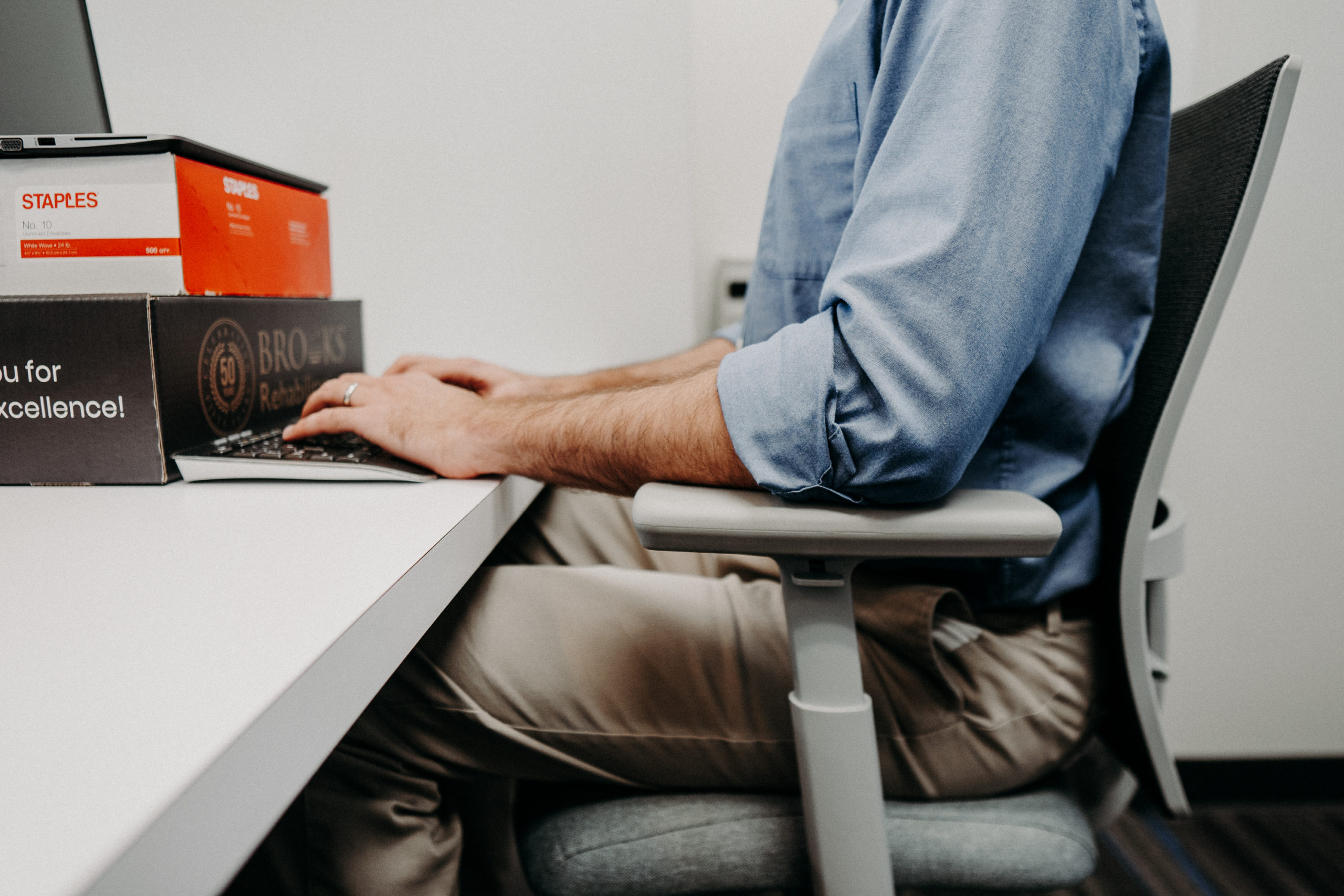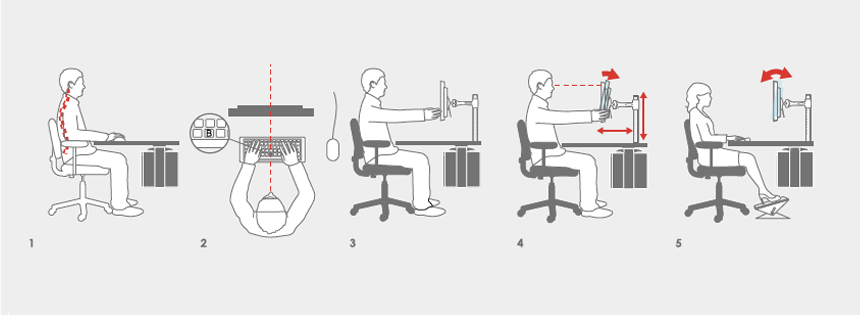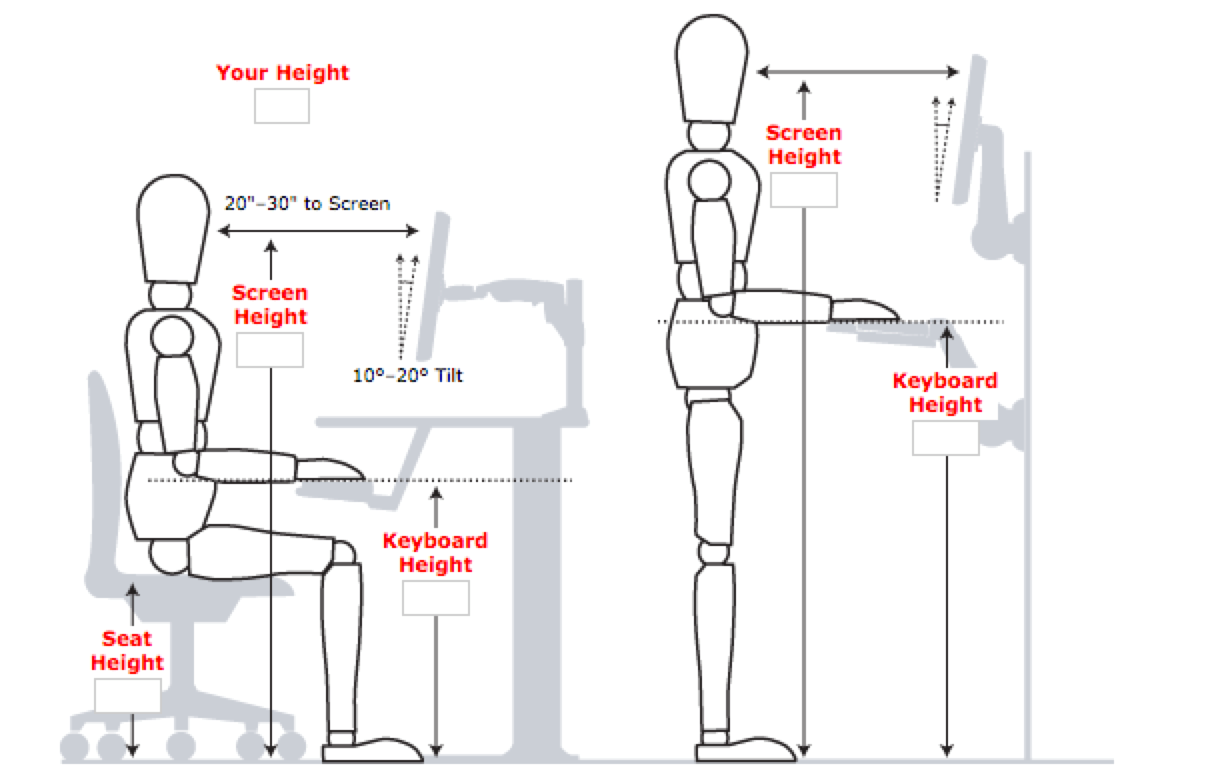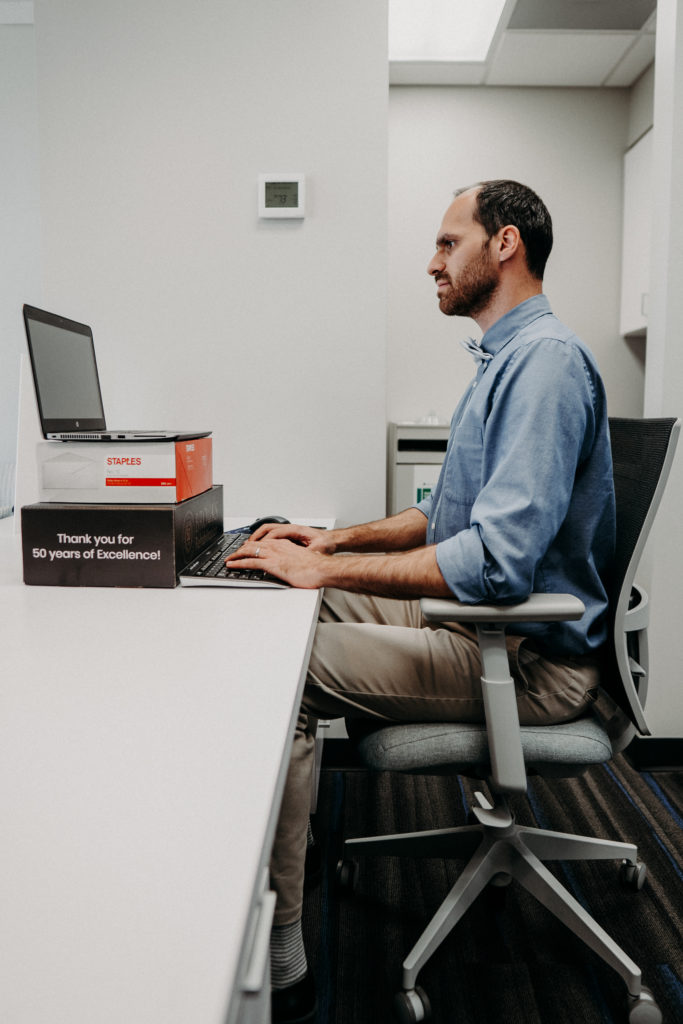Working from home? Don’t let that be a pain

Back to physical health resource hub
 Working from home has become the new norm for a large amount of people since the outbreak of COVID-19. Although this new option keeps us safe from the dangers of disease, it exposes us to a few other issues. Most people who have been directed to work from home didn’t necessarily have a home office set up.
Working from home has become the new norm for a large amount of people since the outbreak of COVID-19. Although this new option keeps us safe from the dangers of disease, it exposes us to a few other issues. Most people who have been directed to work from home didn’t necessarily have a home office set up.
Inadequate sitting, monitor position and lack of structure can create long-term issues such as low back pain, neck pain, headaches and sacroiliac joint pain just to name a few.
Now is the time to make sure your at-home set up is optimized for your health and well-being while helping you stay focused on your work tasks and not on that nagging back pain.
How do you make sure you have the right set up?
- EQUIPMENT: Let me preface this with the fact that any potential investment on additional or new equipment to produce a better set up will be well worth it. Most of us who were not used to working from home may only have access to a laptop. While laptops are convenient for occasional use and easy to transport, they are far from ideal when talking about a home office set up. For starters, the monitor and keyboard are attached. That creates a crunching effect on the body bringing your neck into a flexed or bent position, and your arms in toward your body to type. T-Rex would be happy with this position, but as proud homo sapiens, we should stand straight! The first thing you should consider is to use a keyboard and monitor instead. A mouse for wrist comfort can also be a great addition to your set up. We will explore the perfect setup of these pieces in the next few bullets. Another item to consider is the chair you are sitting on. You don’t have to have an official office chair, but try to find a chair that offers your comfort at the proper height where your feet are directly under you (see diagram below). You may also want to consider alternative options such as a large exercise ball, etc. For those of you who think this may become more of a permanent solution, investing in a standing desk may not be a bad idea. They give you the opportunity to change position throughout the day, which our body truly enjoys. We were made to move!
- NECK POSITION: Let’s be honest, our necks are already stressed from looking at cell phones all day. The last thing we need is to be doing is looking down while we do work too. Your monitor should be exactly at eye level. That means that when you sit up straight, while well supported in all others areas, you should be able to look straight at your monitor. For most people, that actually means your monitor should be much higher than you think! You can use large textbooks and boxes that you have around the house to increase the height of your monitor. A slight tilt backwards of 10-20 degrees is also recommended to optimize your neck position.
- SHOULDERS, WRIST AND EYESIGHT: Most of us have a dominant hand and that’s the hand we use to move our mouse. We have to be careful not to lean over to that side with our body, creating pressure on that shoulder and unevenness on our spine position. Make sure to place your mouse and keyboard on a place that will put your elbows at 90 degrees and that allows your forearm to be supported. Not having that support can pull on your neck and irritate the muscles around that area and on top of your shoulders. The traditional keyboard can also contribute to wrist injury. The curved alternatives help your wrists stay at a neutral position while typing. That means no excessive wrist extension (knuckles moving up toward the ceiling) or deviations (when you bring the fingers in toward the thumbs, or out towards the pinky). A neutral potion is important to avoid overstretching or pinching of structures around your wrist and hand and overuse of the smaller muscles on your forearm. There are many alternatives to the traditional mouse that can provide great ergonomic help to your set up.
 Our eyes can get tired when looking at the computer screen for long periods of time. In addition to work, many of our “leisure” activities these days involve additional screen time on our phones, iPads, tablets and TVs. Blocking the blue light from the screens with some very inexpensive blue light blocker glasses may be a good investment. Also, pay attention to the lighting in your home work space. The light should be coming from the sides and not from behind you or from behind the screen. Keeping your eyes safe will also help you not lean forward towards the screen, bending your neck.
Our eyes can get tired when looking at the computer screen for long periods of time. In addition to work, many of our “leisure” activities these days involve additional screen time on our phones, iPads, tablets and TVs. Blocking the blue light from the screens with some very inexpensive blue light blocker glasses may be a good investment. Also, pay attention to the lighting in your home work space. The light should be coming from the sides and not from behind you or from behind the screen. Keeping your eyes safe will also help you not lean forward towards the screen, bending your neck. - ELBOW AND KNEES: Your “hinges” positions are crucial to provide the proper support for the rest of your body. The elbows and knees should be at 90-degree angles when you are sitting at your desk. That means you may have to decrease or increase the height of your chair. Also make sure that your spine is touching the back of the chair before you make those adjustments.
- FEET POSITION: The best way to start your set up is from the bottom to the top. Your feet should be flat on the ground to provide support. Many times I see people sitting on chairs that are too high for them and their feet are just dangling. You can use a support box or more of those books you have left you on the bookshelf to create a support for your feet.
Being adaptable is the biggest skill we can have these days and adapting your work space for a better outcome is huge part of it. We want every person who is working from home to stay healthy and safe. Post a picture of your set up on social media with the hashtag #WeAreBrooks so we can see how creative you got with your desk set up!


 Our eyes can get tired when looking at the computer screen for long periods of time. In addition to work, many of our “leisure” activities these days involve additional screen time on our phones, iPads, tablets and TVs. Blocking the blue light from the screens with some very inexpensive blue light blocker glasses may be a good investment. Also, pay attention to the lighting in your home work space. The light should be coming from the sides and not from behind you or from behind the screen. Keeping your eyes safe will also help you not lean forward towards the screen, bending your neck.
Our eyes can get tired when looking at the computer screen for long periods of time. In addition to work, many of our “leisure” activities these days involve additional screen time on our phones, iPads, tablets and TVs. Blocking the blue light from the screens with some very inexpensive blue light blocker glasses may be a good investment. Also, pay attention to the lighting in your home work space. The light should be coming from the sides and not from behind you or from behind the screen. Keeping your eyes safe will also help you not lean forward towards the screen, bending your neck.

